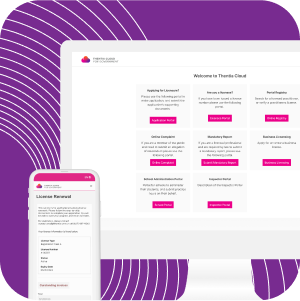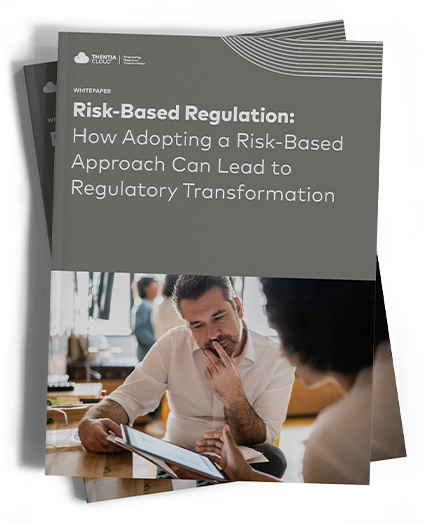“What should good regulation look like?” is a question that regulators must continuously ask themselves in order to create policies that will both balance risk to protect public safety, and also empower professionals to do their best work. In 2009, Harry Cayton, then CEO of the Professional Standards Authority (PSA), an organization that oversees health regulators in the U.K., sought to help regulators answer this question. But beyond this initial question of what makes good regulation, he also wanted to help regulators with how they can achieve it.
Along with PSA colleagues, he crafted a new approach to developing effective regulation known as Right-touch regulation. First published in a 2010 paper, his framework has become incredibly successful for its clarity, simplicity, and effectiveness, and has since been adopted by regulators around the world in various sectors – from healthcare and banking, to engineering, law, and everything in between.
Here, we will examine the core elements of Right-touch regulation as described in the PSA’s updated 2015 version, with insights from Cayton, who now serves as a board member at Thentia.
What is Right-touch regulation?
The PSA formally defines Right-touch regulation as being based on a proper evaluation of risk, proportionate, and outcome-focused.
Cayton emphasizes that Right-touch regulation is more of an approach to regulatory decision-making instead of a static set of instructions. “It’s not a way of doing regulation but rather a way of thinking about regulatory problems in order to find a balanced solution to them,” he explains. “People shouldn’t think of it as a prescription of how to do things, but as a tool to use in thinking about regulatory issues and how best to deliver effective regulation.”
Right-touch regulation emerged from five principles of good regulation identified by the Better Regulation Executive in 2000, which state that regulation should aim to be: proportionate, consistent, targeted, transparent, and accountable. The PSA added “agile” as a sixth principle.
But while these six principles are useful for identifying the characteristics that good regulation should encompass, Right-touch regulation provides regulators with a practical framework they can use in their decision-making. “It’s a methodology for applying those broader objectives, which we’d all agree with – fairness, proportionality, openness,” says Cayton. “But all those things don’t deal with ‘how.’ Right-touch tries to help people tackle the question of how.”
The eight core elements of Right-touch regulation
Right-touch regulation has eight core elements:
1. Identify the problem before the solution
In order to develop an effective solution, regulators must first properly understand the problem. To do this, they have to analyze not only what is happening, but why it’s happening. “Very frequently people don’t analyze the problem correctly or in sufficient depth,” Cayton says. “And equally frequently, people rush to some kind of solution.”
2. Quantify and qualify the risks
Once the problem is fully understood, regulators must quantify and qualify the risks associated with it. Quantifying the risks involves assessing both the likelihood of harm occurring and its severity, while qualifying the risks means understanding the nature of the harm and why it occurs. To properly conduct this evaluation of risk, evidence is crucial.
Cayton says that the approach to risk was an area of Right-touch regulation that changed significantly between its publication in 2010 and when it was updated in 2015. “We now understand that it’s very important to focus on harm, not on risk,” he says, explaining that people often overestimate the likelihood of a harm happening if it is very serious, which can distort thinking and lead to a heavier regulatory response than the risk warrants. “We’re not trying to prevent the risk. We’re trying to prevent the harm,” he says.
3. Get as close to the problem as possible
Regulation can be distant and far-removed from the day-to-day operations of the sector being regulated. The PSA notes that “problems are best solved near to where they occur,” and explains that targeted regulation needs to understand the range of hazards and the factors that increase or decrease the risk of them causing harm. Regulators might need to collaborate with other stakeholders that are closer to the problem to find the right solution.
4. Focus on the outcome
Desired outcomes should be tangible and measurable, and always directed toward reducing harm, the PSA emphasizes. Regulators should remain focused on achieving the desired outcome rather than becoming concerned about process or prioritizing interests other than public safety.
5. Use regulation only when necessary
More regulation isn’t the solution to every problem, and the Right-touch approach stresses that regulation should only be used when other actions are unable to achieve the desired outcome. Cayton notes that reducing burdensome regulations can be an important benefit of adopting the Right-touch framework, but he emphasizes that it is very different from “light-touch regulation,” which advocates taking a hands-off approach.
Instead, as its name implies, Right-touch regulation all about finding the right solution, whether it is a regulatory or non-regulatory response. As the PSA states, “The consequences of adopting this [Right-touch] approach may be less regulation or more regulation, but should certainly mean better regulation.”
Cayton adds, “Right-touch regulation goes from strength at one end to no regulation at all at the other, because it has analyzed the risks properly and determined whether or not regulation is the correct form of intervention to prevent that risk.”
6. Keep it simple
For regulation to work, it needs to be clear to all stakeholders: professionals, the public, employers, and the regulator. In order for it to be simple, everyone needs to know the purpose of the regulation and why it will work.
Cayton says that along with the first step of understanding the problem, he sees people who are new to Right-touch regulation struggle to keep things simple. “When people are working together, particularly in a group, they keep having good ideas and keep adding,” he says. “So you get a system that gets more and more complicated with more and more rules.”
7. Check for unintended consequences
Assessing the likely impact of a particular solution is crucial for regulators to avoid unintended consequences, but in the complex and interconnected systems that regulators operate in, it’s inevitable that changes in policy or practice in one area will impact other areas in unforeseen ways. If regulations aren’t workable, the PSA notes, people will work around them, which can create new (and sometimes greater) risks.
“All regulatory interventions have unintended consequences because they’re about trying to change people’s behavior, and when you do that, something can happen that you didn’t think of and the result is actually a higher risk of harm than the one you’re trying to prevent,” says Cayton.
8. Review and respond to change
Flexibility needs to be built into the regulatory process so that regulators can address new issues and challenges that arise in the sector. The PSA recommends regular reviews, post-implementation evaluation (using continuous evidence gathering), and sunset clauses as effective ways to revisit regulations and make sure they are still achieving the desired outcome.
“Regulation needs to learn to be agile and flexible, to review itself regularly, and to respond to changing circumstances,” Cayton says.
How is Right-touch regulation used in practice?
Now that we have reviewed the core elements of Right-touch regulation, stay tuned for Part 2 of this blog where we will explore how regulators apply these principles in practice to improve their regulatory decision-making processes.
Ariel Visconti is a Content Writer at Thentia with extensive experience writing about academic research, government and politics, emerging technologies, and innovation.












